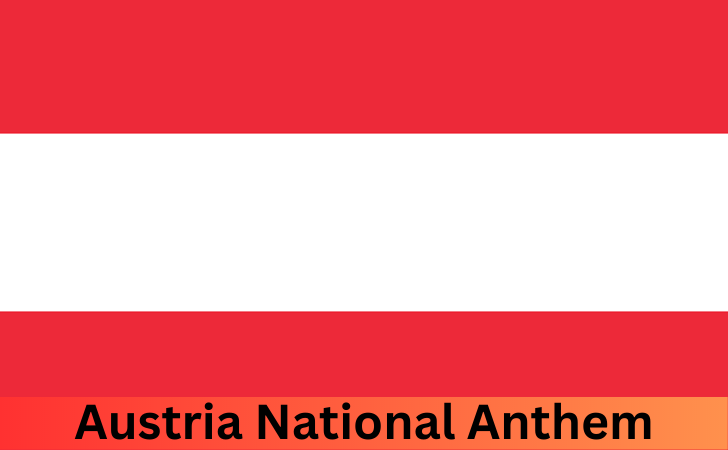The Austria National Anthem holds a significant place in the hearts of its citizens, serving as a powerful symbol of national pride and identity. This article explores the historical background, lyrics and meaning, musical composition, cultural significance, as well as controversies and adaptations surrounding the Austria national anthem. Join us on a journey to discover the rich heritage and emotions embedded within this patriotic anthem.
Historical Background of Austria National Anthem
Origin and Composition
The origins of the Austrian national anthem can be traced back to the late 18th century. The anthem, known as "Land der Berge, Land am Strome" (Land of Mountains, Land on the River), was composed by Wolfgang Amadeus Mozart. Its melody was later adopted as the anthem's basis, with lyrics being added by Paula von Preradović in 1947.
Evolution of the Anthem
Over the years, the Austrian national anthem has evolved to reflect the country's changing political landscape. Originally, the anthem's lyrics emphasized Austria's landscapes and nature. However, after World War II, the lyrics were modified to convey a more inclusive and forward-looking message. This transformation aimed to promote unity and reconciliation among the Austrian people.
Lyrics and Meaning of Austria National Anthem
Original German Lyrics
The original German lyrics of the Austrian national anthem are deeply rooted in the country's history and culture. The song speaks of Austria as a land of mountains, rivers, and fields, highlighting its natural beauty and heritage. It also expresses a sense of patriotism and devotion to the nation.
Land der Berge, Land am Strome,
Land der Äcker, Land der Dome,
Land der Hämmer, zukunftsreich!
Heimat bist du großer Söhne,
Volk, begnadet für das Schöne,
Vielgerühmtes Österreich,
Vielgerühmtes Österreich!
English Translation
Translated into English, the Austrian national anthem's lyrics convey a message of unity, freedom, and progress. They celebrate Austria's stunning landscapes, its people's strength and courage, and their commitment to the nation. The anthem serves as a reminder of the shared values and aspirations that bind Austrians together.
Land of mountains, land by the river,
Land of fields, land of cathedrals,
Land of hammers, with a promising future!
You are the home of great sons,
A people blessed with beauty,
Highly praised Austria,
Highly praised Austria!
Musical Composition of the Anthem
Melody and Structure
The musical composition of the Austrian national anthem combines the captivating melody composed by Mozart with the heartfelt lyrics penned by von Preradović. The anthem's structure follows a traditional verse-chorus pattern, allowing for both solemn and uplifting moments.
Notable Performances
Over the years, the Austrian national anthem has been performed on various occasions, from sporting events to official ceremonies. Notable renditions include orchestral performances, choir ensembles, and even contemporary adaptations that infuse the anthem with modern elements. These performances serve to reinforce the anthem's emotional impact and its role in fostering a sense of national pride.
Cultural Significance of Austria National Anthem
The Austria national anthem holds immense cultural significance within the country. It serves as a unifying force, bringing together people from different regions and backgrounds under a common national identity. The anthem is sung during national celebrations, public events, and international competitions, evoking a sense of collective pride and patriotism. It acts as a reminder of Austria's rich history, traditions, and achievements.
Controversies and Adaptations
Like many national anthems, the Austria national anthem has not been without controversy and adaptations. In recent years, there have been debates and discussions regarding the inclusion of more inclusive and gender-neutral language in the lyrics to reflect the diversity of the Austrian society. Some argue for a modernization of the anthem, while others emphasize the importance of preserving its historical and cultural integrity. These discussions reflect the dynamic nature of national symbols and the ongoing dialogue about identity and representation.
Conclusion
The Austria national anthem stands as a powerful symbol of pride, identity, and unity for its citizens. Its historical origins, lyrical depth, and melodious composition make it a cherished national treasure. The anthem's ability to evoke strong emotions and foster a sense of belonging highlights its significance in the cultural fabric of Austria. As the country continues to evolve and embrace diversity, the anthem remains a constant reminder of its shared heritage and values.
FAQs (Frequently Asked Questions)
1. What is the official national anthem of Austria?
The official national anthem of Austria is "Land der Berge, Land am Strome" (Land of Mountains, Land on the River).
2. Who composed the melody of the Austrian national anthem?
The melody of the Austrian national anthem was composed by Wolfgang Amadeus Mozart.
3. When were the lyrics of the Austrian national anthem written?
The lyrics of the Austrian national anthem were written by Paula von Preradović in 1947.
4. Has there been any controversy surrounding the Austrian national anthem?
Yes, there have been debates and discussions regarding the inclusion of more inclusive and gender-neutral language in the anthem's lyrics.
5. How does the Austrian national anthem contribute to a sense of national identity?
The Austrian national anthem serves as a unifying force, bringing together people from different regions and backgrounds under a common national identity, fostering a sense of pride and belonging.
References:
- Austrian National Anthem. (n.d.). Retrieved from https://www.nationalanthems.info/at.htm
- National Anthem of Austria. (n.d.). Retrieved from https://austria.org/national-anthem
- Austria: Land der Berge, Land am Strome. (n.d.). Retrieved from https://www.nationalanthems.info/at.htm
